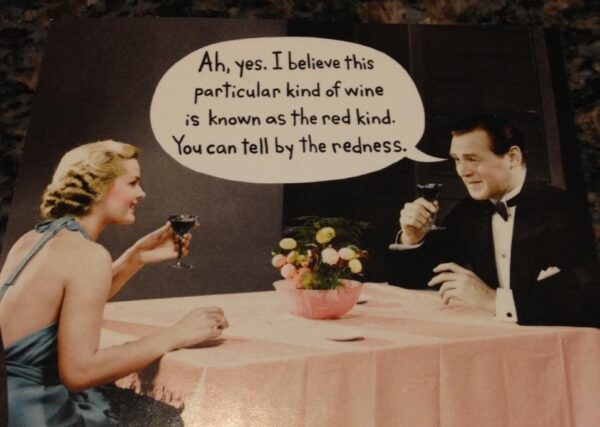
Thinking about how we think about wine can be an enlightening exercise — and a humbling one. As an example, consider the ways we organize wines in a retail setting. Routinely, it’s a bit like the brochures in a travel agency — which is to say, by destination. Thus, the Italian wines huddle in their mountain and valley redoubts; those from France and Spain and the USA do the same. Some retailers have sections devoted to wines made from organic grapes or that are low in sulfites. Wines with high scores from various critics may be called out. Sparkling wines are normally segregated, as are stickies, half-bottles, magnums and bag-in-box.
It’s not just wine shops that wrestle with the organization enigma. In restaurants you’re likely to encounter similar approaches, but there are twists. One early experiment intended to facilitate food and wine pairing took shape at Les Zygomates as far back as 1990’s when Lorenzo Savona created categories like big, bold reds, and crisp, dry whites.
While this approach is relatively common today, it can still raise an eyebrow – especially when the column heads aren’t self-explanatory. We’ve seen “vitamin pink,” “deep roots” and “We dare you.” Fun and suggestive, for sure, but not what you would call informative.
The shelves at one wineshop we know created a progression from light to weighty wines as you move through the store. This technique doesn’t depend on so much on discrete categories as on a gradual shading of temperament.
The way wines in shops and restos are organized is one thing, the way we conceive of them mentally and rhetorically is another entirely. In our heads there are almost too many categories of wine to track.
For example, so-called natural wines constitute an important category today, even though it’s not really clear how one goes about including or excluding members of the set. In the wine corner, we’ve created sub-species to distinguish among the variations – not to say factions — that have emerged within its ranks. We think of some as idealists, others as folklorists, primitivists, or cosmics. No doubt other phenotypes exist and only await a nomenclature.
But hang on a bit. There’s lots more. Technological, corporate, fad and kitsch wines are just a start. There are organically and biodynamically-farmed wines from properties which are certified by some authority – or none at all “Wild yeast-fermented” wine seems worth itemizing. In the blink of an eye we’re on to vegan-friendly wines, skin-macerated whites, wine made in clay pots. How about reds that love a chill? Glou-glou?
Even in Les Zyg’s taxonomy the identity of each wine was front and center. How gobsmacked were we, then, to witness rock star somm Theresa Paopao at the late, lamented restaurant Ribelle offer her clientèle a list with startlingly clever and evocative individual tags (“light and pretty, delicate acidity, back-n-forth flavors of citrus-n-mineral”), while never revealing the identity of the wine itself? That’s right, unless you mercilessly pestered the server for the info or somehow stole a peek at the label, you never knew what you were drinking. It seemed to make a joke of classification systems by largely ignoring them. Maybe this is how it should be. Will be.
Until it is, you’ll have to forgive me if I pause long and thoughtfully over your innocent question: “Say, what kind of wine is this?”